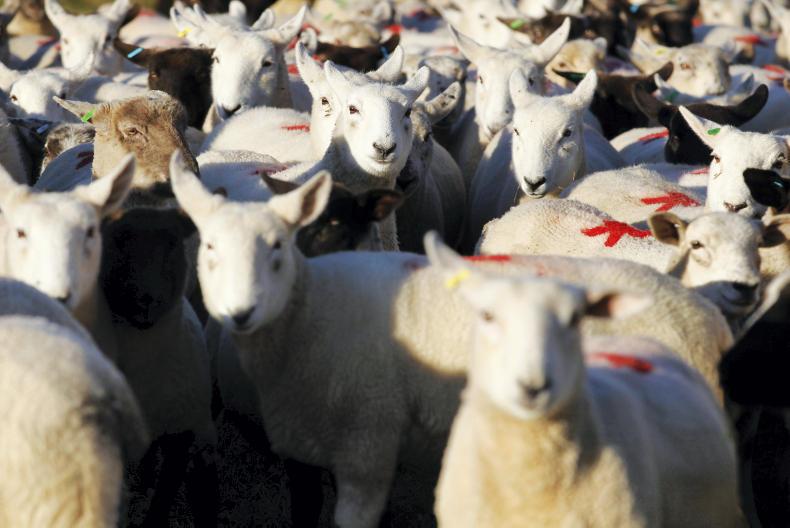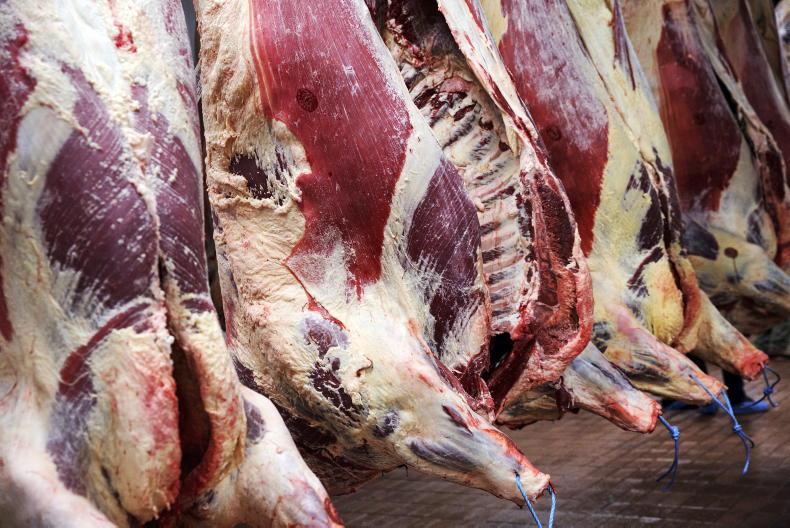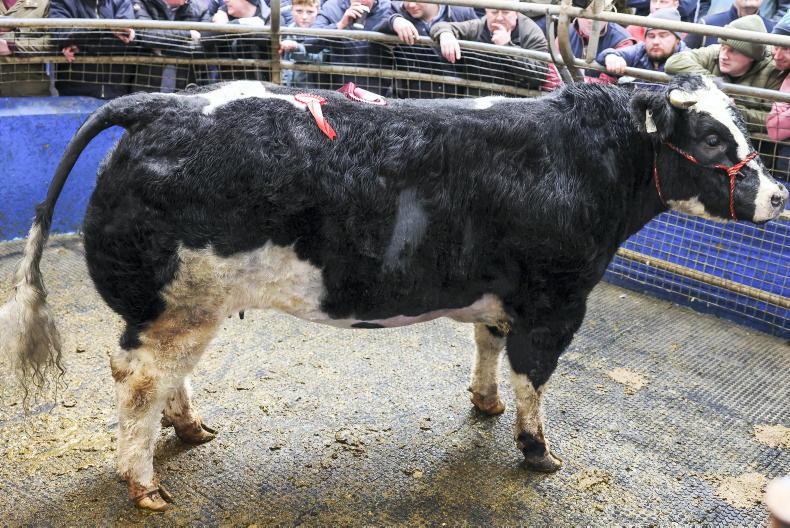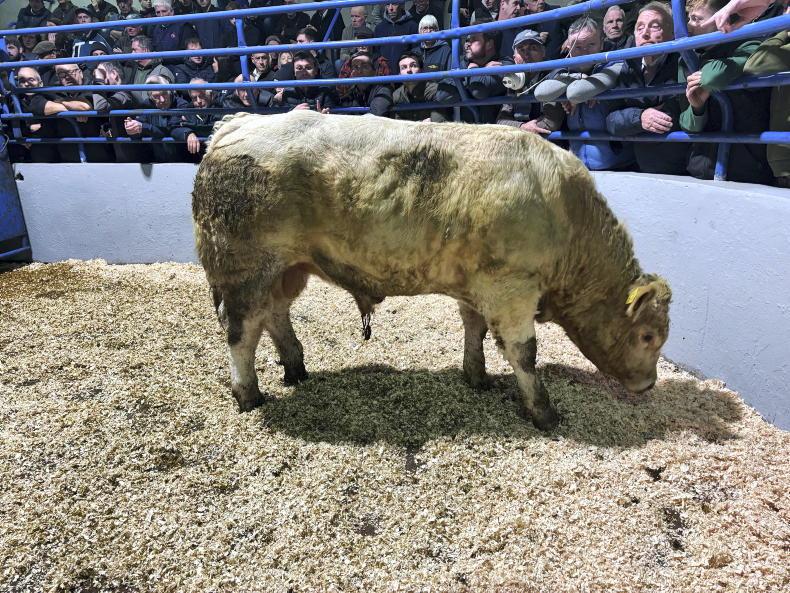The elephant in the room of 2016 – Brexit – was not yet on Teagasc’s radar when its annual forecast was published last December. There was no mention of the UK’s referendum on EU membership or its potential effects on Ireland’s agricultural markets, starting with the sterling exchange rate.
In fact, the depreciating currency one year ago was the euro, which was positive for Irish exports. Teagasc’s forecast, especially for the crucial UK beef market, was more focused on whether the value of sterling would continue to increase against the euro. The drop in the value of the UK’s currency after the referendum at the end of June was not foreseen.
Dairy recovery: too optimistic
Teagasc’s outlook was that Ireland would increase milk production by 7% while prices rise by 5% in 2016. It seems that the forecast identified the correct trend, but was too optimistic: production so far this year is only up by around 6%, and dairy farmers have pulled back this autumn, which means the final figure for the year will probably be slightly lower.
Meanwhile, prices have only just begun to recover, after bottoming out during the peak summer production months. The price recovery is coming too late to offer the prospect of any overall increase this year. In fact, the CSO estimates that milk prices have been more than 10% lower in 2016 than in 2015.
Falling beef margins: accurate prediction
Teagasc told us last year that relatively high beef prices buoyed by the strong UK economy and weak euro exchange rate could not last, especially as beef production was expected to rise. Finished cattle prices were expected to fall by 4% to stay under €4 this year, while weanlings and stores would see their value fall by 4%.
One year on, this is broadly what happened. Overall cattle prices for this year are on course to come at 6% below last year’s. Calves, especially, are now trading at 10% below the prices they fetched one year ago.
Teagasc also correctly predicted the relative stability of input prices, with the small reduction in feed costs nowhere near bridging the gap in falling cattle prices. Profitability is likely to fall on suckler and beef farms this year as expected by Teagasc.
Sheep prices: too optimistic
Teagasc’s outlook was for increasing lamb prices on the back of global tightening supply, with the average price rising by 4%. With input costs rising modestly, this was expected to leave sheep farmers slightly better off.
The story this year has been different, with 2016 lambs prices closely tracking last year’s. The CSO estimates that overall lamb prices this year will be only 0.7% higher than in 2015. Input costs, however, have decreased thanks to lower fertiliser and feed prices.
Tillage: recovery did not happen
Teagasc was hoping for a 5% rise in grain prices on the basis that the world would revert to a normal harvest after the previous bumper years. The outlook was for a wheat price of €149/t, resulting in a slight improvement of the average tillage margin by €30/ha. However, Teagasc warned at the time that the wheat price could be as low as €122.
We now know that global markets remain awash with grain and the lower price estimate was unfortunately correct. The silver lining is that Teagasc’s forecast for input costs was too pessimistic, with seed, spray and fertiliser costs expected to rise marginally. Instead, average fertiliser prices have been 15% lower this year and seeds remained stable. The cost of plant protection products increased moderately as forecast.
Pig farmers approaching break even
After the collapse in pigmeat prices last year, Teagasc’s outlook for pig farmers was for a 6% rise in farmgate prices partly cancelled out by a 3% rise in feed costs, resulting in a 43c/kg margin – short of the 50c/kg break-even point.
Chinese demand has led a global recovery in pig prices and Irish farmers are on course to achieve at least part of the forecast increase, although current CSO estimates fall short of 6%. Meanwhile, feed costs did not rise as expected. In fact, they are now nearly 4% below their level at the same time last year. Teagasc’s prediction of pig farmers reaching break-even at the end of 2016 but missing it when the whole year is considered is therefore likely to be correct.
Read more
EU payments underpin farmers’ incomes
The elephant in the room of 2016 – Brexit – was not yet on Teagasc’s radar when its annual forecast was published last December. There was no mention of the UK’s referendum on EU membership or its potential effects on Ireland’s agricultural markets, starting with the sterling exchange rate.
In fact, the depreciating currency one year ago was the euro, which was positive for Irish exports. Teagasc’s forecast, especially for the crucial UK beef market, was more focused on whether the value of sterling would continue to increase against the euro. The drop in the value of the UK’s currency after the referendum at the end of June was not foreseen.
Dairy recovery: too optimistic
Teagasc’s outlook was that Ireland would increase milk production by 7% while prices rise by 5% in 2016. It seems that the forecast identified the correct trend, but was too optimistic: production so far this year is only up by around 6%, and dairy farmers have pulled back this autumn, which means the final figure for the year will probably be slightly lower.
Meanwhile, prices have only just begun to recover, after bottoming out during the peak summer production months. The price recovery is coming too late to offer the prospect of any overall increase this year. In fact, the CSO estimates that milk prices have been more than 10% lower in 2016 than in 2015.
Falling beef margins: accurate prediction
Teagasc told us last year that relatively high beef prices buoyed by the strong UK economy and weak euro exchange rate could not last, especially as beef production was expected to rise. Finished cattle prices were expected to fall by 4% to stay under €4 this year, while weanlings and stores would see their value fall by 4%.
One year on, this is broadly what happened. Overall cattle prices for this year are on course to come at 6% below last year’s. Calves, especially, are now trading at 10% below the prices they fetched one year ago.
Teagasc also correctly predicted the relative stability of input prices, with the small reduction in feed costs nowhere near bridging the gap in falling cattle prices. Profitability is likely to fall on suckler and beef farms this year as expected by Teagasc.
Sheep prices: too optimistic
Teagasc’s outlook was for increasing lamb prices on the back of global tightening supply, with the average price rising by 4%. With input costs rising modestly, this was expected to leave sheep farmers slightly better off.
The story this year has been different, with 2016 lambs prices closely tracking last year’s. The CSO estimates that overall lamb prices this year will be only 0.7% higher than in 2015. Input costs, however, have decreased thanks to lower fertiliser and feed prices.
Tillage: recovery did not happen
Teagasc was hoping for a 5% rise in grain prices on the basis that the world would revert to a normal harvest after the previous bumper years. The outlook was for a wheat price of €149/t, resulting in a slight improvement of the average tillage margin by €30/ha. However, Teagasc warned at the time that the wheat price could be as low as €122.
We now know that global markets remain awash with grain and the lower price estimate was unfortunately correct. The silver lining is that Teagasc’s forecast for input costs was too pessimistic, with seed, spray and fertiliser costs expected to rise marginally. Instead, average fertiliser prices have been 15% lower this year and seeds remained stable. The cost of plant protection products increased moderately as forecast.
Pig farmers approaching break even
After the collapse in pigmeat prices last year, Teagasc’s outlook for pig farmers was for a 6% rise in farmgate prices partly cancelled out by a 3% rise in feed costs, resulting in a 43c/kg margin – short of the 50c/kg break-even point.
Chinese demand has led a global recovery in pig prices and Irish farmers are on course to achieve at least part of the forecast increase, although current CSO estimates fall short of 6%. Meanwhile, feed costs did not rise as expected. In fact, they are now nearly 4% below their level at the same time last year. Teagasc’s prediction of pig farmers reaching break-even at the end of 2016 but missing it when the whole year is considered is therefore likely to be correct.
Read more
EU payments underpin farmers’ incomes










SHARING OPTIONS